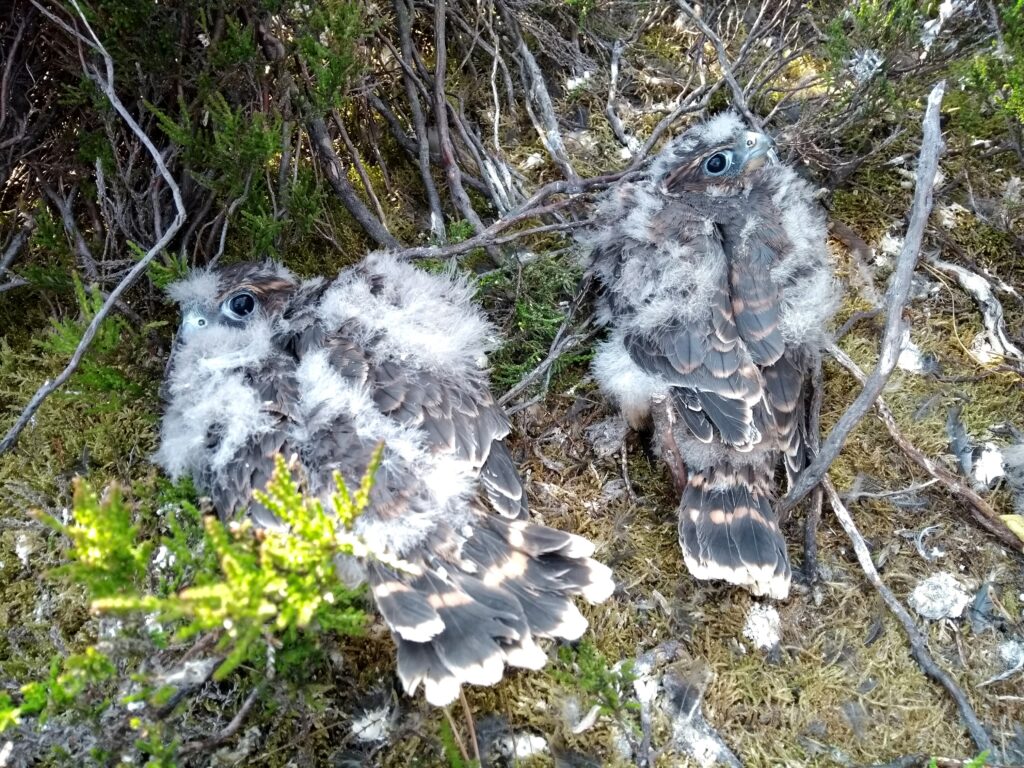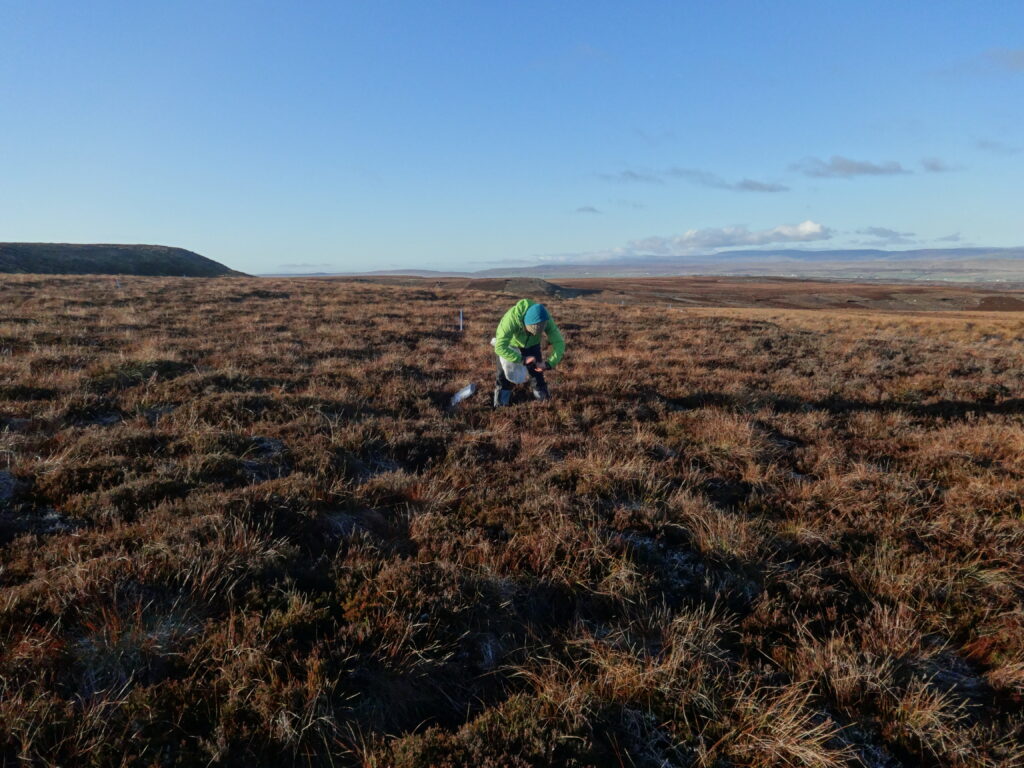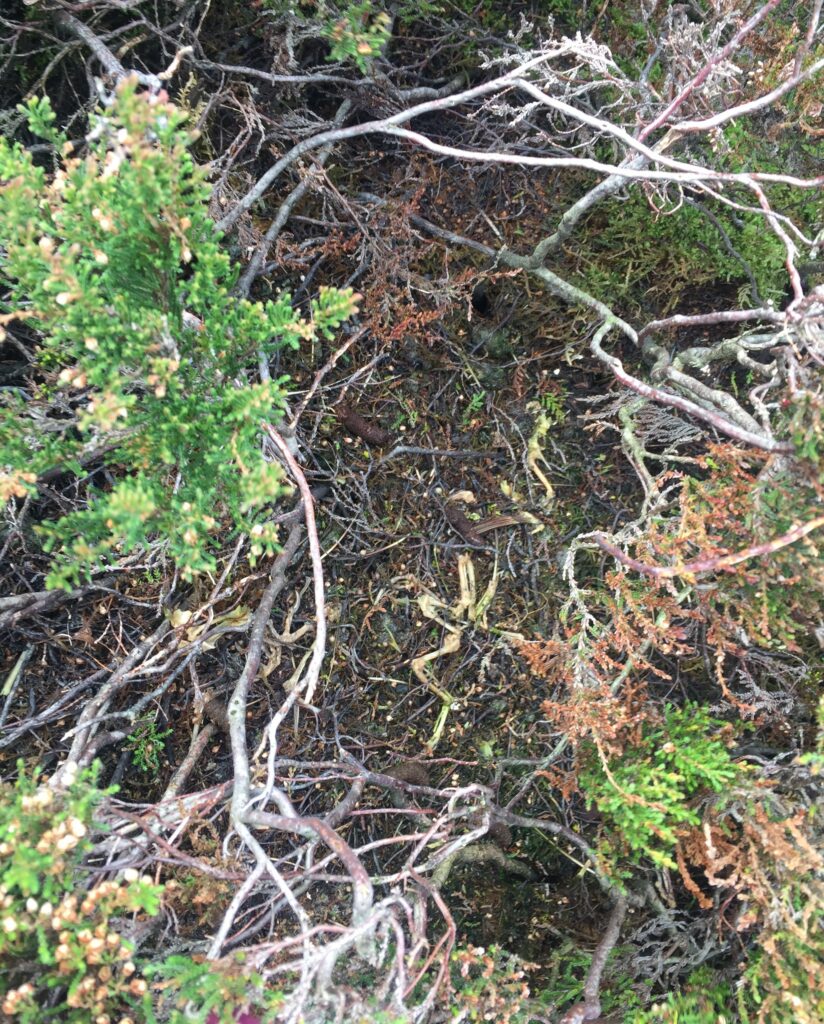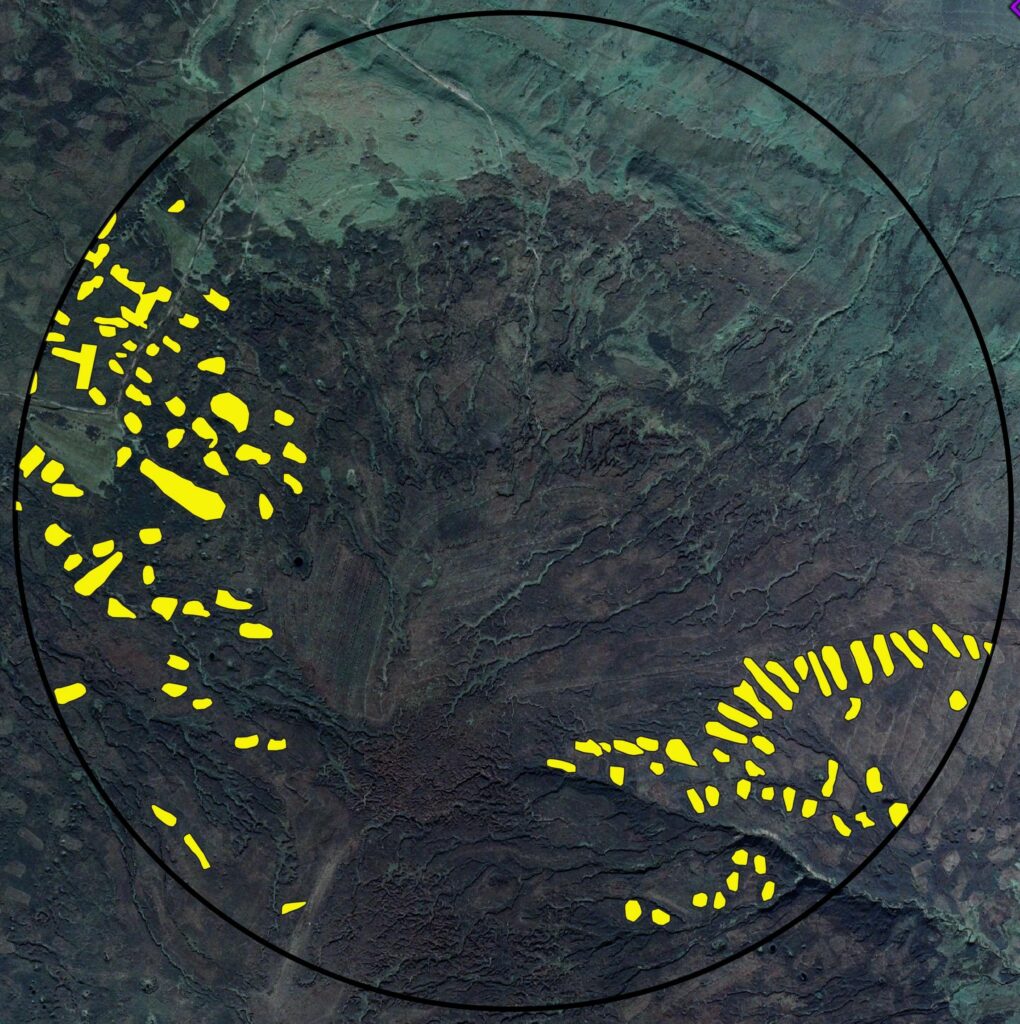The Merlin Magic Project is funded by the government’s Green Recovery Challenge Fund. The fund was developed by Defra and its arm’s-length bodies. It is being delivered by the National Lottery Heritage Fund in partnership with Natural England, the Environment Agency and Forestry Commission.
With the merlin gone for the winter, we have been busy in the uplands taking field measurements to understand what makes habitats suitable for nesting merlin. As merlin are specially protected, it is important that they are not disturbed while they are breeding, so we collect these measurements after the breeding season ends.

Having identified 32 nests on grouse moors where merlin bred in 2020 and 2021, we have surveyed the vegetation at nests and in the surrounding area. At the nest we have taken measurements of the heather height and other vegetation present. As merlin prefer to nest in tall heather, we also measure the size of the heather stand (patch) containing the nest. To quantify availability of suitable patches within the breeding territory (1km of the nest) we have measured the vegetation height and composition, and the frequency and size of patches of tall heather (greater than 30cm) along four equally spaced parallel transect lines placed within a 1km radius around the nest.


To support our work in the field, we have been using aerial photos to map the size of heather burns and cuts within each merlin territory. To see how heather management has changed over time, we use three images taken approximately 10 years apart between 2001 to 2021. This will help us to understand whether the degree of heather management in each territory impacts breeding merlin.

